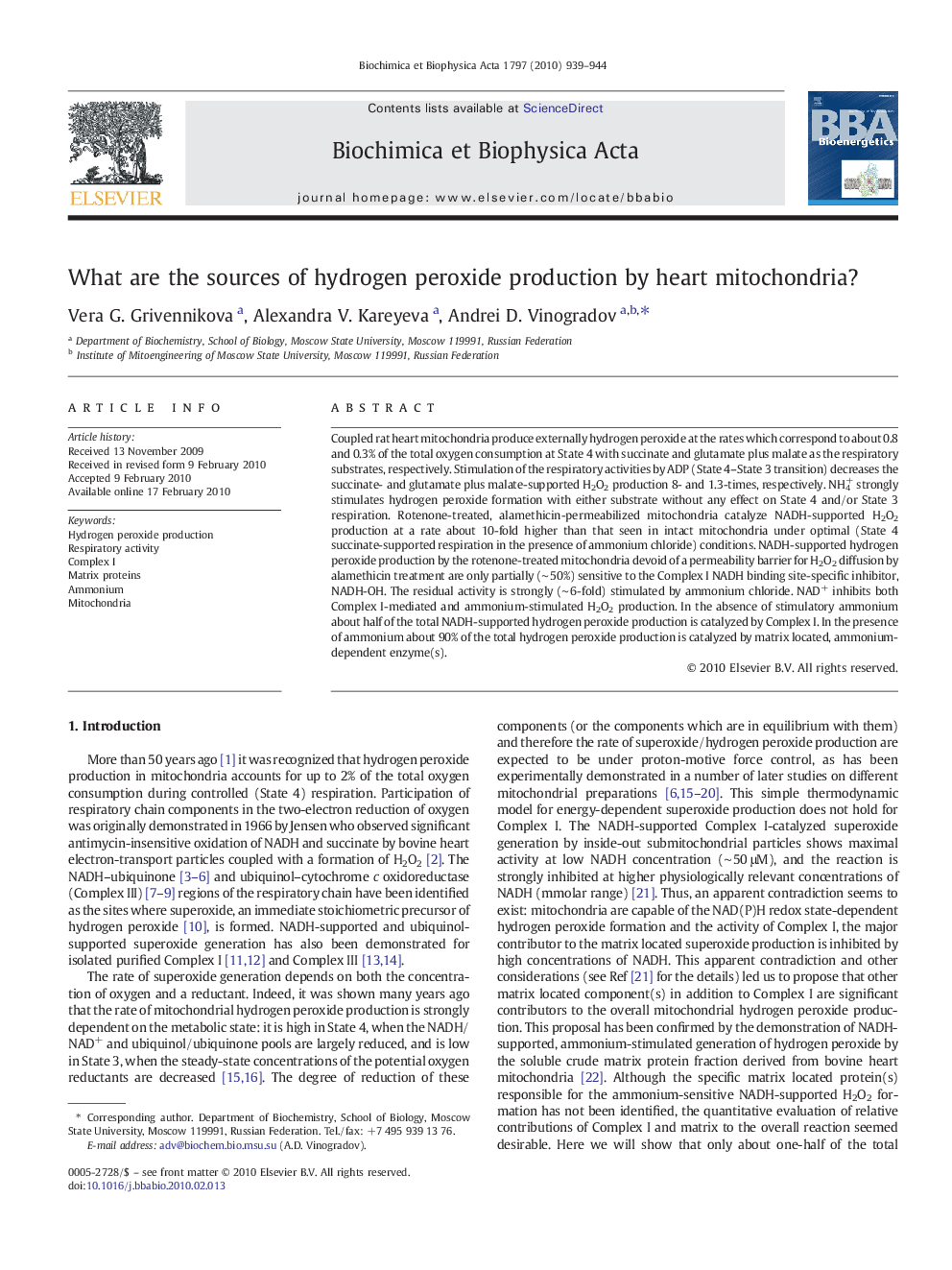| Article ID | Journal | Published Year | Pages | File Type |
|---|---|---|---|---|
| 8298934 | Biochimica et Biophysica Acta (BBA) - Bioenergetics | 2010 | 6 Pages |
Abstract
Coupled rat heart mitochondria produce externally hydrogen peroxide at the rates which correspond to about 0.8 and 0.3% of the total oxygen consumption at State 4 with succinate and glutamate plus malate as the respiratory substrates, respectively. Stimulation of the respiratory activities by ADP (State 4-State 3 transition) decreases the succinate- and glutamate plus malate-supported H2O2 production 8- and 1.3-times, respectively. NH4+ strongly stimulates hydrogen peroxide formation with either substrate without any effect on State 4 and/or State 3 respiration. Rotenone-treated, alamethicin-permeabilized mitochondria catalyze NADH-supported H2O2 production at a rate about 10-fold higher than that seen in intact mitochondria under optimal (State 4 succinate-supported respiration in the presence of ammonium chloride) conditions. NADH-supported hydrogen peroxide production by the rotenone-treated mitochondria devoid of a permeability barrier for H2O2 diffusion by alamethicin treatment are only partially (â¼Â 50%) sensitive to the Complex I NADH binding site-specific inhibitor, NADH-OH. The residual activity is strongly (â¼Â 6-fold) stimulated by ammonium chloride. NAD+ inhibits both Complex I-mediated and ammonium-stimulated H2O2 production. In the absence of stimulatory ammonium about half of the total NADH-supported hydrogen peroxide production is catalyzed by Complex I. In the presence of ammonium about 90% of the total hydrogen peroxide production is catalyzed by matrix located, ammonium-dependent enzyme(s).
Keywords
Related Topics
Life Sciences
Agricultural and Biological Sciences
Plant Science
Authors
Vera G. Grivennikova, Alexandra V. Kareyeva, Andrei D. Vinogradov,
